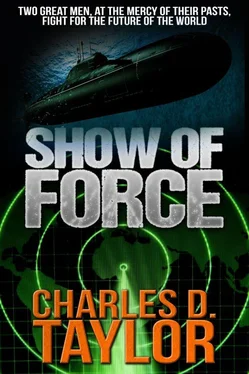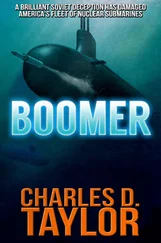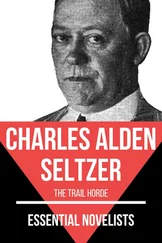His military blouse was open, one of the rare times he allowed himself this relaxation. He needed that comfort when he was alone with his thoughts. His chest carried an impressive array of combat ribbons, and the gold on his sleeves signified his position as the single Admiral of the Fleet of the Soviet Union. He was not only the man who had built the Soviet Navy after the Great Patriotic War, he was still in total command of it. Only moments before, he had given the order for destruction of the U.S. satellite in retaliation for whatever the Americans had done to his own.
He was well aware of the fire at the American Embassy, although that had been the work of the K.G.B. They would handle the Americans in Moscow. His responsibility was coordinating the confrontation at Islas Piedras in the Indian Ocean, working closely with both the Premier and Admiral Kupinsky aboard the flagship Lenin. The phone on his desk buzzed briefly, and his secretary explained that the head of the K.G.B. was waiting to talk with him.
He picked up the phone and identified himself, then listened intently, not responding but nodding his head a few times to himself. When the caller had finished, he thanked him briefly for the information, hanging up before the other could add anything else to the one-sided conversation. It was simply formal notification that communications between the United States Embassy and Washington had been completely cut for the time being. The Americans were isolated.
There was a sharp knock at the single door to his office. An aide appeared after a respectful wait, wheeling in a chart of the. Indian Ocean. Admiral Gorenko wanted nothing cluttering his office, nothing that would interfere when he was thinking. All the charts, television screens, communications equipment, computer consoles, and assorted command paraphernalia were kept in the command room next to his office. He had asked to be brought up to date every two hours, but did not care to step into the noise of the next room, where its occupants would invariably snap to attention as he entered.
The aide saluted. "The position of Lenin at seven A.M. was exactly here, Admiral Gorenko," and he pointed to a spot well marked on the chart. "The American force is located here," — he pointed to another distinctly marked spot—"northeast of Islas Piedras. They changed course in the middle of the day as you expected, bringing them to this point at sixteen hundred, about one thousand miles from our own force."
Gorenko's eyes turned from the chart to the aide. "Are there still just six ships in that formation?"
"Yes, sir."
"Any sign of Nimitz?" "No, sir. We believe she's still heading for Simonstown,"
"Don't believe. Check again." His eyes narrowed slightly. "She will be turned back north, and she will be joined by all of those ships spread out on your chart. That you can be certain of, and I want to know instantly when she does." His head lowered back to the papers on the desk.
But he could not concentrate. He leaned back in his chair again, and found himself looking at a photograph on the wall. There were two men in the picture standing side by side, dressed in combat gear, guns slung on their shoulders. The backdrop was rubble. No buildings were standing. Written in the lower right-hand corner was "Stalingrad, Nov. 18, 1942." One of the men was Gorenko, hardly recognizable today because of the strange clothes he wore then and the forty-year difference in time. The other was his friend, Georgi Kupinsky, Alex's father. And now, he thought to himself, I may be sending the son to his death.
… The clothes they had worn then made them look like awkward bears, but they were warm, much warmer than the Germans or Rumanians. Their hats, with short visors to accommodate their helmets, had earflaps that encircled all but nose and eyes. The sheepskin coats were bulky and hung below their knees, and their weight made fast movement difficult, but it was preferable to freezing to death. The Volga was already filled with ice flows, and it would get much colder before the next offensive was over. They had warm gloves that were pliable enough to allow them freedom of movement, but the best- part of their uniforms were their valenki, the felt-covered, padded boots. It was said that armies traveled on their stomachs, but since there was little food the 62nd Army managed to get by with warm feet. The Germans they were able to capture could not run because their feet had frozen in their straw-stuffed boots, worthless protection in the Russian winter.
The photo had been taken between one of the many pitched battles during the street fighting in Stalingrad. They were standing near the Central Railroad Station, a place that General Chuikov had decided would be a "must hold" position. It was near Mamai Hill, another of the bluffs in the city that had seesawed back and forth. They were not allowed to give up the station as long as they were still alive.
That was another order that had been forgotten with time. Russians in Stalingrad had to be dead before they gave ground.
It had been decreed that the city would be the turning point of the war. If they did not stop the advance here, then the Germans would move on the Baku oil fields. They had been told they had only two obligations to the state — continue to fight or die. The Germans seemed to be of the same mind. They fought fiercely, giving up an attack only when there was no one left to fight. The Rumanians to the north and the Italians to the south, who were fighting for the Germans, were not as motivated. They preferred to take their chances as prisoners. They did not fear the torture the German soldiers expected if they were captured. Himmler's doctrine of Untermensch, the Commissar Decree of May 1941, ordered all Russian political officials and army political commissars killed on capture. The German soldiers expected no less.
The Admiral's thoughts drifted back to the early days of the war, after Hitler had surprised Stalin by striking on three fronts. Gorenko had been a young captain of his own destroyer in the Black Sea Reel. He had been too junior to be caught up in the purges of 1937 and 1938, and the loss of so many of his superiors had created a rapid career path for him. He had then been made a commander of a squadron of destroyers, and when the Germans were sweeping into the Odessa region he had been charged with organizing the "sailor army." It was September, 1941, and his sailors had delayed the Germans until late October. The plan was to slow them down as much as possible until they were stopped completely by the Russian winter.
They had evacuated the sailors after Odessa fell. Then they became part of the Azov Flotilla, trying to keep the supply lanes open through the Azov Sea and up the Don near Stalingrad. He had organized the Kerch Landing in the struggle to save Sebastopol. The German armies were relentless and their tanks gradually drove the Russians back to the sea. But they held the city through the winter, effectively stalling Hitler's advance until the spring. It was Gorenko's sailor army that had fought the Germans 50 bravely, time and again throwing back the advances and taking such heavy losses. They were forced to evacuate Kerch in May of that year and in July of 1942 Sebastopol finally fell. There were few of those sailor soldiers left. The citizens never forgot the brave "five sailors of Sebastopol" who threw themselves under advancing German tanks. It was a defense of the homeland and each sailor was committed to die on land or sea.
On his wall, next to the photo from Stalingrad, was the simple message found on the body of one of his sailors at Firing Point Number Eleven:
Russia, my country, my native land! Dear Comrade Stalin! I, a Black Sea sailor, and a son of Lenin's Komsomol, fought as my heart told me to fight. I slew the beasts as long as my heart beat in my breast. Now I am dying, but I know we shall win. Sailors of the Black Sea Navy! Fight harder still, kill the mad fascist dogs. I have been faithful to my soldier's oath.
Читать дальше












